Introduction
There are two basic types of baskets: utilitarian and non-utilitarian. Utilitarian baskets are functional, and the Seminole and Miccosukee made baskets for collecting, processing, and storing food and personal items. During the 20th century, Seminole and Miccosukee peoples began making non-utilitarian baskets to sell to tourists. Non-utilitarian baskets bought by tourists may be exhibited as decorative items or can take on a utilitarian function.
Pack Baskets
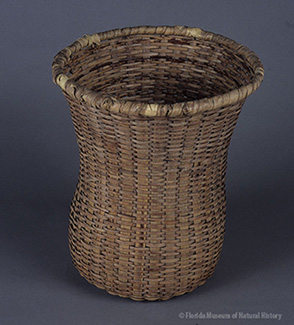
Pack (or burden) baskets are used for collecting and transporting large loads (Figure 1). Material carried can include firewood, food, and personal items. Pack baskets were the largest basket type made by the Seminole and Miccosukee.
The Seminole and Miccosukee used pack baskets for many purposes. Harvesting crops was one task where the pack basket came in handy. Crops like corn and squash could be transferred from the garden to the cooking chickee without the need for multiple trips. During the 19th century Seminole Wars, the Seminole and Miccosukee were constantly on the move to avoid US troops. Pack baskets were important because they allowed for the swift collection and transportation of key items for survival in the Florida environment.
Envelope Baskets
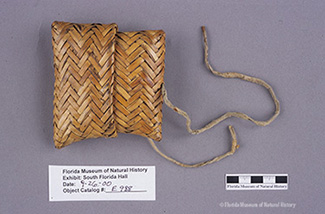
Envelope baskets have been documented as early as 1847 and as late as 1950. These baskets are small and thin, and include two separate pieces that fit over top of each other to form a pocket (Figure 2).
Envelope baskets were used to carry personal medicine, and some researchers refer to them as medicine baskets or a medicine man’s kit. According to traditional custom, envelope baskets were made only by grandmothers or older women, and specific rules for making them had to be followed. If the rules were not followed closely, danger could befall the maker. The Seminole and Miccosukee carefully guard their medicinal knowledge, so very little is known about envelope baskets beyond their form and function.
Berry Baskets
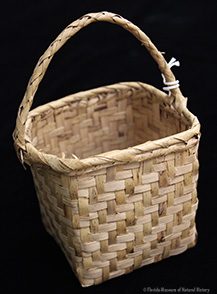
Berry baskets are named after their function (for collecting berries) and are typically small, rectangular, and include a handle (Figure 3).
The state of Florida has an assortment of edible wild berries, including elderberries, huckleberries, mulberries, cabbage palm berries, and saw palmetto berries. The Seminole and Miccosukee collected these fruits for food and trade. Berry baskets were initially made for utilitarian purposes but by the early 20th century they became a popular tourist item.
Sieve Baskets
Sieve (or sifter) baskets are used to process food, such as corn and grains. They are typically short and square with a shallow base (Figure 4).
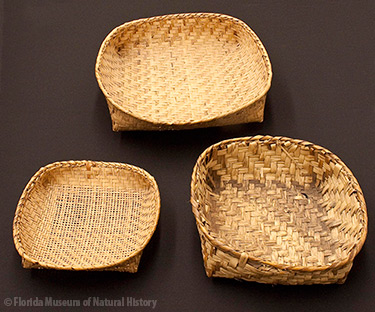
Sieve baskets consist of two forms, one having a solidly woven bottom and the other having open wicker work for sifting. Seminole and Miccosukee peoples would harvest, pound, and then sift corn through a series of sieve baskets. Different mesh sizes of each basket capture the corn as it passes through. The top basket captures the larger corn bits, which are good for preparing sofkee, and the bottom basket collects the fine cornmeal for making bread. Modern grinders have replaced the traditional mortar and pestle once used by the Seminole and Miccosukee.
Sweetgrass Baskets
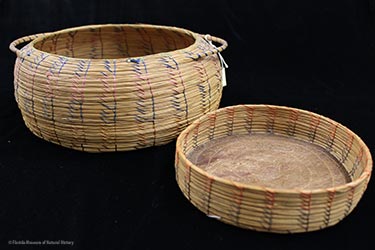
Sweetgrass baskets became popular during the 20th century. They come in a variety of shapes and sizes, with some integrating a lid with a doll’s head (Figure 5).
The development of coiled sweetgrass baskets among the Seminole and Miccosukee is not clear. Some have credited Harriett Bedell for introducing the art to the Seminoles in the 20th century. Oral histories and personal interviews argue that the Seminoles have always made coiled baskets from sweetgrass. Others believe the coiling technique may have been introduced from the African slaves who lived among the Seminoles in the 19th century.